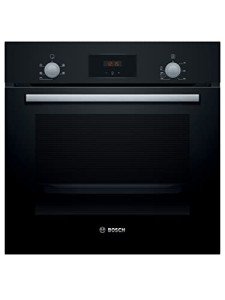The Future of Culinary Convenience: Integrated Ovens and Hobs
In the ever-evolving world of cooking area design, integrated ovens and hobs are at the forefront of contemporary cooking development. These devices not only guarantee visual appeal however also improve performance and effectiveness, transforming how we prepare our meals. As homeowners significantly seek to create seamless, elegant, and easy to use cooking areas, the integration of ovens and hobs offers an ideal solution. This post explores what integrated ovens and hobs are, their benefits, and essential considerations for those seeking to upgrade their kitchen.
What Are Integrated Ovens and Hobs?
Integrated ovens and hobs are cooking area home appliances seamlessly built into the kitchen cabinetry or counters, rather than sticking out as different entities. Integrated ovens are created to mix into cooking area units, offering a flush finish with surrounding cabinets. Similarly, integrated hobs are installed directly into the countertop, creating a streamlined appearance. This minimalist style method not only elevates the visual appeal of the kitchen area however also maximizes available space.
Types of Integrated Ovens
Single Ovens: These standalone systems are designed for simpleness and ease of usage, featuring a single cooking chamber and multiple cooking modes such as baking, barbecuing, and roasting.
Double Ovens: Ideal for larger families or devoted cooks, double ovens provide 2 independent cooking compartments, enabling numerous meals to be prepared at the same time at different temperatures.
Mix Ovens: Blending standard baking and steam cooking, combination ovens use flexibility for numerous cooking needs, keeping moisture while guaranteeing perfectly cooked meals.

Types of Integrated Hobs
Gas Hobs: These hobs permit accurate temperature control and immediate heat, making them a preferred among professional chefs and cooking lovers.
Induction Hobs: Known for their performance and security, induction hobs utilize electro-magnetic energy to heat pots and pans straight. fitted oven are fast to heat and cool off rapidly, minimizing the danger of burns.
Electric Hobs: Featuring smooth ceramic or glass surfaces, electric hobs are simple to tidy and provide an even heat circulation for a variety of cooking designs.
Advantages of Integrated Ovens and Hobs
1. Space Optimization
With the pattern of smaller sized living areas and open-concept homes, integrated appliances help make the most of cooking area area. By fitting seamlessly into cabinetry, kitchen areas can appear bigger and more open, reducing clutter and boosting visual appeal.
2. Visual Appeal
Integrated ovens and hobs offer a sleek, modern-day look that fits well within various design styles. The ability to tailor kitchen cabinetry guarantees that house owners can achieve a cohesive look that matches their design, whether modern, standard, or something in between.
3. Enhanced Functionality
Integrated appliances frequently feature innovative functions such as wise innovation, self-cleaning options, and different cooking modes. These improvements not only streamline the cooking process however likewise improve functionality, making cooking a satisfying experience.
4. Security Features
Integrated hobs, particularly induction designs, are considered safer than standard cooking surfaces. They cool off quickly, reducing the threat of burns, and typically consist of features like kid locks and automatic shut-off for extra safety.
Key Considerations When Choosing Integrated Ovens and Hobs
1. Space and Layout
Before acquiring integrated home appliances, consider the area offered in your kitchen. Measure bulit-in ovens and counter tops carefully to ensure an ideal fit, permitting for adequate ventilation and installation space.
2. Cooking Needs
Examine your cooking practices and choices. If you regularly amuse or cook big meals, a double oven might be the finest choice. Alternatively, if you're a periodic chef, a single oven may suffice. Similarly, selecting between gas, electric, or induction hobs will depend on your cooking style and comfort level.
3. Energy Efficiency
With rising energy expenses and growing environmental issues, choosing energy-efficient home appliances can save money in the long run. buy built in oven for items with high energy rankings and functions like programmable timers and eco-modes.
4. Quality and Brand
Buying top quality home appliances from trusted brand names guarantees sturdiness and performance. Reading consumer reviews and seeking recommendations can assist narrow down the very best alternatives tailored to your requirements.
Conclusion
Integrated ovens and hobs are more than just kitchen home appliances; they represent a shift towards a more practical, elegant, and effective approach to cooking. As house owners focus on seamless style, convenience, and advanced functions, these integrated services will certainly shape the cooking areas of tomorrow. Whether refurbishing a cooking area or creating a brand-new one from scratch, integrating ovens and hobs is a financial investment that promises to enhance both culinary experiences and the total aesthetic of the home.
